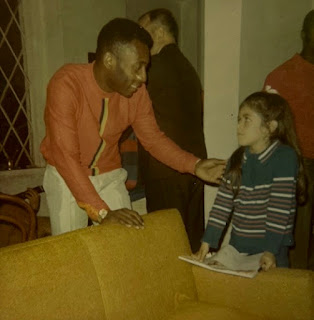Arsenic and e-Health
Monsieur Homais is one of the less likable characters in Madame Bovary. The deceitful pharmacist fakes a deep friendship for Charles Bovary. In fact, he constantly undermines his reputation with his patients, thus contributing to Charles’ ruin.
Monsieur Homais is not merely wicked. A smart man, he has been convicted in the past for practicing medicine without a license and so he worries, very reasonably, that Charles might denounce him to the authorities for the illicit business of health advice and personal consultations that he keeps organising in his pharmacy.
The ultimate success of the pharmacist's dodgy schemes is not surprising. Those were the days when blacksmiths and barbers could regularly act as dentists and surgeons (after all, Charles is not a doctor either, but only a “health officer”); patients and doctors had to meet face to face in order to interact; and access to health information was the privilege of a few. Mail and telegraph messages were of course commonly available, but neither allowed real-time conversations. Madame Bovary was serialised in 1856, exactly twenty years before Bell was awarded a patent for the electric telephone by the United States Patent and Trademark Office.
Once ICT (information and communication technologies) of all kinds began to make possible quick consultations and rapid responses, being “on call” acquired a new meaning, telemedicine was born, and the Monsieur Homaiss around the world started to find it increasingly harder to make a living.
Today, we ordinarily speak of e-Health or Health 2.0 as the most recent development in healthcare practices, which are increasingly patient-centred, not just patient-oriented.
Definitions vary, but put simply e-Health is the answer to “what have computer scientists ever done for our health?”. From the empowerment of individuals, who regularly access health-related information on the web, to specialised applications for monitoring populations of patients through their mobile phone, e-Health is a macroscopic phenomenon, which is fast spreading and has immense potentialities.
Two conferences recently organised in the Netherlands – the Second Health 2.0 Conference and the First International E-Mental Health Summit – well illustrate the exponential growth of e-Health and its popularity.
Behind the success of ICT-based medicine and well-being lie two phenomena and two trends.
The first phenomenon may be labelled “the transparent body”. By measuring, monitoring and managing our bodies ever more deeply, accurately and non-invasively, ICT have made us more easily explorable, have increased the scope of possible interactions from without and from within our bodies (e.g. nanotechnology), and made the boundaries between body and environment increasingly porous (e.g. fMRI). We were black boxes, we are quickly becoming white boxes through which anyone can see.
The second phenomenon is that of “the shared body”. “My” body can now be easily seen as a “type” of body, thus easing the shift from “my health conditions” to “health conditions I share with others”. And it is more and more natural to consider oneself not only the source of information (what I tell the doctor) or the owner of information about oneself (my Google health profile), but also a channel to transfer DNA information and corresponding biological features between past and future generations (see 23andme).
The correlated trends are a democratization of health information, which is available, accessible to, and owned by more citizens of any modern Yonville than ever before.
And the socialisation of health conditions: you only need to check “multiple sclerosis” on YouTube, for example, to appreciate how easily and significantly can ICT shape and transform our sense of belonging to a community.
By 2018, the world population will consist of more people over 65 than children under 5, for the first time in the history of humanity. We are getting older, more educated and wealthier, so e-Health can only become an increasingly common, daily experience, one of the pillars of future medical care, and obviously a multi-billion-dollar business, some of which will inevitably be dodgy. Which of course leads us back to Monsieur Homais.
Emma learns from him how to acquire the arsenic with which she will commit suicide. During her horrible agony, her husband desperately “tried to look up his medical dictionary, but could not read it”. Nowadays you only need the usual Wikipedia. Just check under Arsenic poisoning. You will find there both diagnosis and treatment.
Monsieur Homais is not merely wicked. A smart man, he has been convicted in the past for practicing medicine without a license and so he worries, very reasonably, that Charles might denounce him to the authorities for the illicit business of health advice and personal consultations that he keeps organising in his pharmacy.
The ultimate success of the pharmacist's dodgy schemes is not surprising. Those were the days when blacksmiths and barbers could regularly act as dentists and surgeons (after all, Charles is not a doctor either, but only a “health officer”); patients and doctors had to meet face to face in order to interact; and access to health information was the privilege of a few. Mail and telegraph messages were of course commonly available, but neither allowed real-time conversations. Madame Bovary was serialised in 1856, exactly twenty years before Bell was awarded a patent for the electric telephone by the United States Patent and Trademark Office.
Once ICT (information and communication technologies) of all kinds began to make possible quick consultations and rapid responses, being “on call” acquired a new meaning, telemedicine was born, and the Monsieur Homaiss around the world started to find it increasingly harder to make a living.
Today, we ordinarily speak of e-Health or Health 2.0 as the most recent development in healthcare practices, which are increasingly patient-centred, not just patient-oriented.
Definitions vary, but put simply e-Health is the answer to “what have computer scientists ever done for our health?”. From the empowerment of individuals, who regularly access health-related information on the web, to specialised applications for monitoring populations of patients through their mobile phone, e-Health is a macroscopic phenomenon, which is fast spreading and has immense potentialities.
Two conferences recently organised in the Netherlands – the Second Health 2.0 Conference and the First International E-Mental Health Summit – well illustrate the exponential growth of e-Health and its popularity.
Behind the success of ICT-based medicine and well-being lie two phenomena and two trends.
The first phenomenon may be labelled “the transparent body”. By measuring, monitoring and managing our bodies ever more deeply, accurately and non-invasively, ICT have made us more easily explorable, have increased the scope of possible interactions from without and from within our bodies (e.g. nanotechnology), and made the boundaries between body and environment increasingly porous (e.g. fMRI). We were black boxes, we are quickly becoming white boxes through which anyone can see.
The second phenomenon is that of “the shared body”. “My” body can now be easily seen as a “type” of body, thus easing the shift from “my health conditions” to “health conditions I share with others”. And it is more and more natural to consider oneself not only the source of information (what I tell the doctor) or the owner of information about oneself (my Google health profile), but also a channel to transfer DNA information and corresponding biological features between past and future generations (see 23andme).
The correlated trends are a democratization of health information, which is available, accessible to, and owned by more citizens of any modern Yonville than ever before.
And the socialisation of health conditions: you only need to check “multiple sclerosis” on YouTube, for example, to appreciate how easily and significantly can ICT shape and transform our sense of belonging to a community.
By 2018, the world population will consist of more people over 65 than children under 5, for the first time in the history of humanity. We are getting older, more educated and wealthier, so e-Health can only become an increasingly common, daily experience, one of the pillars of future medical care, and obviously a multi-billion-dollar business, some of which will inevitably be dodgy. Which of course leads us back to Monsieur Homais.
Emma learns from him how to acquire the arsenic with which she will commit suicide. During her horrible agony, her husband desperately “tried to look up his medical dictionary, but could not read it”. Nowadays you only need the usual Wikipedia. Just check under Arsenic poisoning. You will find there both diagnosis and treatment.





Comments
Post a Comment